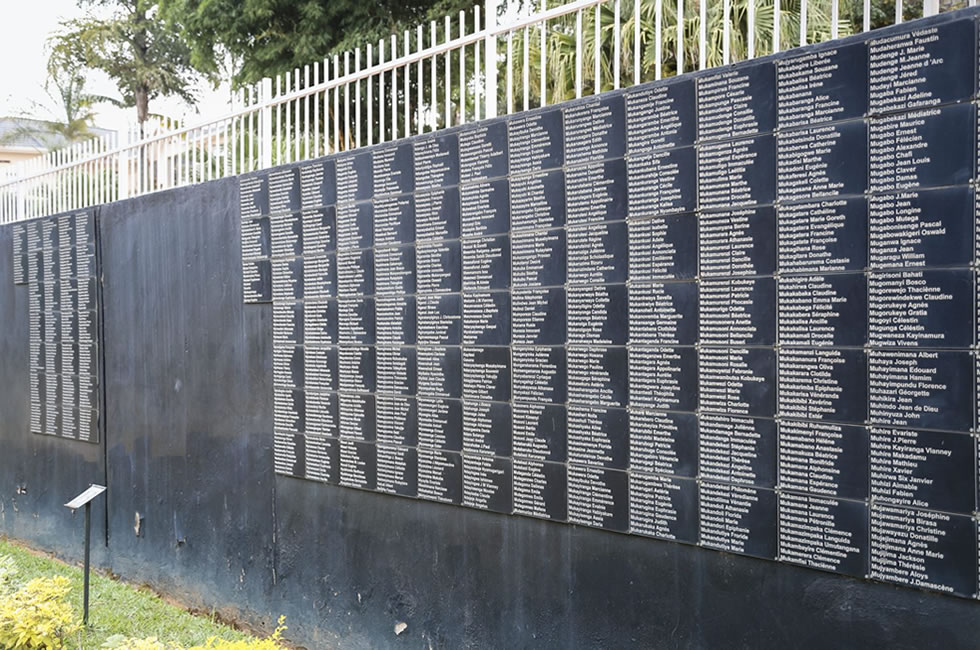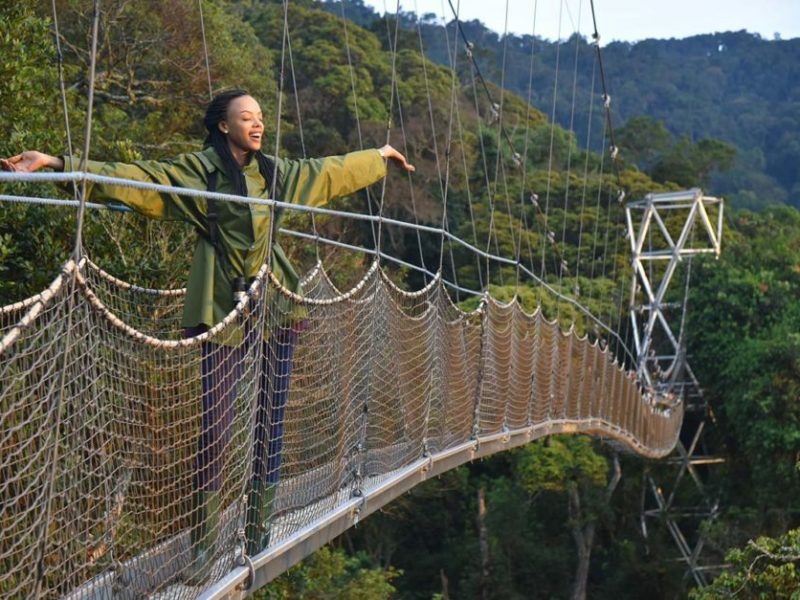
Inside Kigali Genocide Memorial: A Sobering, Insightful Experience
Kigali Genocide Memorial Centre is the final resting place for more than 250,000 victims of the 1994 genocide. It honours the memory of more than one million Rwandans killed in 1994 through education and peace building.
A tour to the memorial site, as I recently did, not only opens your eyes to the length man can go to achieve his own nefarious objectives, but also how the remains of the victims of the genocide are well-preserved for posterity.
The imposing building itself is an architectural wonder — a perfect resting place for the fatal victims of the genocide. More so, it is a place where the rich albeit sad history of the genocide is well documented for posterity. The building itself kind of tells you, “Never Again”.
As I gathered, the memorial was opened officially on the 10th anniversary of the Rwandan genocide on April 7, 2004. This, again, is a burial site constructed to honour some 250,000 people who lost their lives during the genocide. The planning plus management was, and is still handled, by the UK-based charity organisation called Aegis Trust, in collaboration with local authorities.
Aegis, a term that stands for ‘trust’ or ‘shield’, is an organisation campaigning against crimes against humanity and genocide. It was established in 2000 and its activities include policy, research, remembrance, education, media work and campaigns that involve humanitarian support for the victims.
The memorial itself comprises of the main historical exhibition (and here you are going to walk through a corridor where you’ll get to read about the beginning of the genocide), a children’s memorial exhibition, plus an exhibition on comparative genocide known as ‘Wasted Lives.’
It also has over four acres of memorial gardens that contain 10 mass graves, as well as the National Genocide Documentation Centre.
The magnificent principal building was structured by design to represent three different epochs: the pristine period before, during and after the genocide.
Our History Room
The main building has three exhibitions. The first room is entitled, ‘Our History.” It introduces the world, and everybody who visits the memorial centre, to the Rwandan history with large pictures showing individuals of all ages, showcasing the cultural lifestyle of Rwanda prior to the genocide, women breastfeeding their children and old men playing their traditional games, different attires, lifestyles, and even an almost life-size image of Rwandan King Yuhi V Musinga imposingly standing tall and proud.
Besides the images is a stanza that says, “This is about our past and our future, our nightmares and our dreams, our fear and our hope, which is why we begin where we end, with the country we love.”
As you walk silently (yes, you have to be solemn here) from one showroom to another through a series of corridors that are lined with several short notes with detailed information, there’s a feeling of walking on a real journey, as though you are experiencing the horrible genocide right through your own eyes.
Original and unedited videos of individuals being massacred (oh, what a terror!), testimonies of perpetrators and survivors as well as some Gacaca Court proceedings are conspicuously mounted on the concrete walls. Alongside these is a timeline of images of Rwanda’s (dark) history.
From “Our History Room,” you’re then led to a room called “Descent to Genocide”. This is a dimly lit room but full of graphic pictures of bones plus dead bodies, fatal victims of the genocide all over the country.
On one side of the wall stands 3ft image of mass grave at Kigali St. Famile, where over 30,000 genocide victims were burnt alive, and with comprehensive info on how Rwandan priests — meant to be custodians of souls — were instead responsible for the massacre of a host of Tutsis who had sought refuge in their churches.
A new Rwanda looking to the future
It is not over. You walk as if turning the next page in a tragic storybook, eager to reach that part where the villain is caught and forced to face justice, and thinking that the worst is behind you, until you arrive at the room called “After the Genocide”.
But even before crossing over, the word ‘Reactions’ is fully emblazoned in big capital letters. There’s a photo worth a thousand words; a scene where many children are gathered together, all staring into the camera, all orphans with little hope for the future.
From this, you are led to a circular corridor where a renowned artist, Ardyn Halter, created two stained glass windows that not only show a link between the survivors of the atrocity and Rwanda, but also the start of the genocide with skulls engraved at the bottom to the top, which simply means a new Rwanda looking to the future.
Then you are not going to miss rooms where individuals have placed images of their loved ones, a room solely dedicated to innocent children who lost their lives during the genocide, and a quote reading, “We did not make ourselves orphans”. At the end of your tour, you can now enter into the beautiful and intricate memorial gardens.
A sense of serenity, peace and calm
The gardens have fountains with a rose garden, where each rose symbolises a loved one lost but now blossoming in the bright future of what Rwanda currently is. These gardens were designed in such a way that individuals could sit outside in utter reflection. A sense of serenity, peace and calm suddenly grips you as you walk through the gardens.
Then there’s a sense of hope for the future, since everywhere is green, and everything is budding as though each leaf presents some sense of hope — a new and bright future. Your tour is lastly going to lead you to the Documentation Centre.
This centre is a place where several youths come together to debate, learn, acquire knowledge, as well as deal with issues on how they may help to prevent genocides, like what happened to Rwanda in 1994.
Then there are programmes the memorial is establishing for all to benefit from the development center, basing its major objective on unity and reconciliation. This is a place where, indeed, the fatal victims of the genocide have found a home.
As the memorial centre’s management aptly states, “these are everyone’s places as much as Rwanda’s. They should remain as a warning for future generations, both in Rwanda and in the rest of the world about the consequences of hatred and division.”

